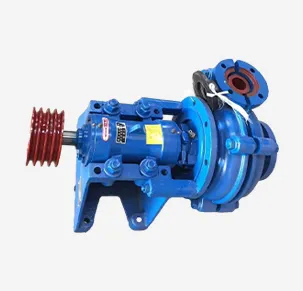Scottish Gaelic
- Afrikaans
- Albanian
- Amharic
- Arabic
- Armenian
- Azerbaijani
- Basque
- Belarusian
- Bengali
- Bosnian
- Bulgarian
- Catalan
- Cebuano
- Corsican
- Croatian
- Czech
- Danish
- Dutch
- English
- Esperanto
- Estonian
- Finnish
- French
- Frisian
- Galician
- Georgian
- German
- Greek
- Gujarati
- Haitian Creole
- hausa
- hawaiian
- Hebrew
- Hindi
- Miao
- Hungarian
- Icelandic
- igbo
- Indonesian
- irish
- Italian
- Japanese
- Javanese
- Kannada
- kazakh
- Khmer
- Rwandese
- Korean
- Kurdish
- Kyrgyz
- Lao
- Latin
- Latvian
- Lithuanian
- Luxembourgish
- Macedonian
- Malgashi
- Malay
- Malayalam
- Maltese
- Maori
- Marathi
- Mongolian
- Myanmar
- Nepali
- Norwegian
- Norwegian
- Occitan
- Pashto
- Persian
- Polish
- Portuguese
- Punjabi
- Romanian
- Russian
- Samoan
- Scottish Gaelic
- Serbian
- Sesotho
- Shona
- Sindhi
- Sinhala
- Slovak
- Slovenian
- Somali
- Spanish
- Sundanese
- Swahili
- Swedish
- Tagalog
- Tajik
- Tamil
- Tatar
- Telugu
- Thai
- Turkish
- Turkmen
- Ukrainian
- Urdu
- Uighur
- Uzbek
- Vietnamese
- Welsh
- Bantu
- Yiddish
- Yoruba
- Zulu
Telephone: +86 13120555503
Email: frank@cypump.com
Samh . 05, 2024 04:31 Back to list
slurry pump material
Choosing the Right Material for Slurry Pumps
Slurry pumps play a critical role in various industries, including mining, mineral processing, construction, and wastewater treatment. These pumps are specifically designed to transport abrasive, viscous, or corrosive mixtures of solids and liquids known as slurries. Given the challenging nature of the materials they handle, selecting the appropriate pump material is essential for ensuring efficiency, longevity, and cost-effectiveness. In this article, we will explore the key materials used in slurry pumps and their respective advantages and limitations.
Common Materials for Slurry Pumps
1. Cast Iron Cast iron is one of the most commonly used materials for slurry pumps due to its strength and durability. It exhibits excellent wear resistance, making it suitable for handling abrasive slurries. Furthermore, cast iron is cost-effective and can be easily cast into various shapes, allowing for versatile pump design. However, its susceptibility to corrosion limits its application in highly acidic or alkaline environments.
2. High Chrome Alloys High chrome alloys are specifically engineered for handling abrasive slurries. These alloys offer superior hardness and wear resistance compared to traditional cast iron. Pumps made from high chrome materials are ideal for gritty slurries found in mining and mineral processing industries. Despite their toughness, high chrome alloys can be more expensive and may exhibit brittleness, which necessitates careful handling.
3. Stainless Steel Stainless steel is known for its excellent corrosion resistance. It is often the material of choice for applications involving corrosive chemicals or where hygiene is a concern, such as in food processing and pharmaceuticals. While stainless steel is less susceptible to corrosion, it may not perform as well as cast iron or high chrome alloys in highly abrasive environments. Thus, the choice of material must be balanced against the type of slurry being pumped.
4. Polyurethane Polyurethane is a synthetic polymer known for its exceptional elasticity and resistance to wear. It is increasingly being used in the manufacture of slurry pump components, including liners and impellers. Polyurethane’s lightweight nature allows for easier installation and transport. Additionally, it can be molded into complex shapes, providing flexibility in design. However, its temperature limitations and vulnerability to certain chemicals must be considered.
5. Rubber Rubber-lined slurry pumps are commonly used in applications where the slurries are not overly abrasive but may be corrosive. The rubber lining provides a degree of both wear and corrosion resistance, making it suitable for wastewater treatment and mine tailings. While rubber offers good flexibility and vibration damping, it typically has a shorter lifespan compared to metal counterparts in high-abrasion scenarios.
slurry pump material

Considerations for Material Selection
When choosing a material for slurry pumps, several factors must be considered
- Nature of the Slurry Understanding the composition of the slurry, including its acidity, abrasiveness, and temperature, is crucial for selecting the right material. For example, a high-abrasion slurry may require a different material compared to a chemically aggressive one.
- Operating Conditions Factors such as pressure, flow rate, and temperature should influence material selection. Materials need to withstand the operational demands without compromising performance.
- Cost vs. Performance While high-quality materials can enhance pump longevity and efficiency, they often come at a higher price. A cost-benefit analysis is essential to ensure that the chosen material aligns with business objectives.
- Maintenance and Repair Some materials are easier to maintain than others. Understanding the upkeep requirements of each material can significantly impact operational downtime and overall maintenance costs.
Conclusion
Selecting the right material for slurry pumps is a complex process that requires careful consideration of various factors. The choice of material can determine not only pump efficiency and durability but also the overall success of the industrial process involved. By understanding the unique properties and applications of different materials, manufacturers and operators can make informed decisions that enhance productivity, reduce downtime, and ensure a sustainable operation in the long run.
-
High-Efficiency Submersible Effluent Pump for Sewage & Wastewater Solutions
NewsJul.08,2025
-
High Quality CH Warman Slurry Pump Factory - Leading Horizontal Slurry Pump Supplier
NewsJul.08,2025
-
Hot Sale Chemical Circulating Pump – Efficient & Durable Slurry Circulating Pump Solutions
NewsJul.08,2025
-
High-Efficiency Submersible Dredge Pump for Sand & Gravel Durable Dredge Slurry Pumps Solutions
NewsJul.07,2025
-
Wholesale Slurry Pump Impeller Supplier – High-Quality & Efficient Pump Parts for Enhanced Performance
NewsJul.07,2025
-
High-Efficiency Water Submersible Pumps Reliable Water Pump for Potable Water Supply
NewsJul.06,2025










